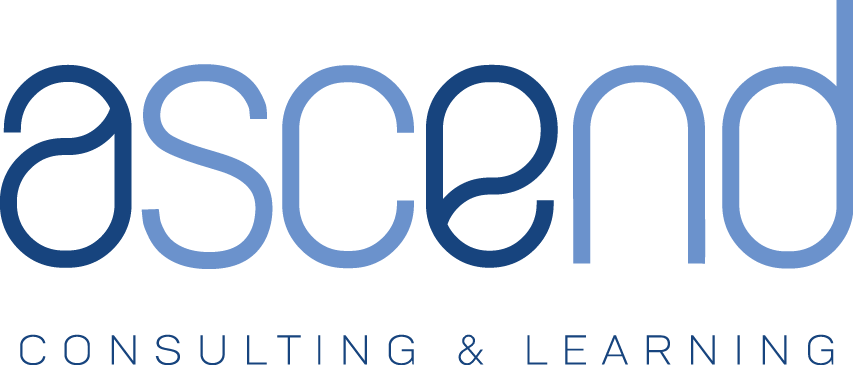
McKinsey & Company recently released an interesting study, “The next normal in construction: How disruption is reshaping the world’s largest ecosystem.” The article highlights why construction is an industry that is ripe for disruption and how current trends are starting to point it in that direction. Major shifts in the construction market would have significant impacts to many architecture and engineering (A/E) firms, so this is a study worth paying attention to.
The McKinsey study makes the case that the delivery of construction projects may fundamentally change in the (relatively) near future. The study outlines nine shifts McKinsey believes will occur, if not already occurring, that will dramatically change the construction industry. Several of these shifts would have major implications to the business models of A/E firms. The study indicates that almost half of the value pool in the industry could be redistributed, and A/E firms are not expected to be on the winning side of this value shift.
The major trends and shifts outlined in the article are all interrelated. It predicts that construction will become more product based, where developers will buy structures from contractors that provide solutions to specialized market segments. One-off designs, dangerous and inefficient on-site construction, and fragmentation of key industry players could give way to standardization, offsite construction and prefabrication, consolidation, lean execution, and greater use of technology. The construction industry of the future could look more like manufacturing than, well, construction.
What does this mean for A/E firms?
What would it mean for A/E firms if construction were to make the shift from project based delivery to product based delivery? As with many things related to strategy, the answer is “it depends.” It depends on the A/E firm, their capabilities and resources, their culture, the markets they compete in, and their current business model. If you compete in markets where standardization is possible and even beneficial (hospitality, office, residential, etc.), this is a question you should probably be asking yourself.
How would your business model change if the construction industry were to shift from custom project based delivery to standardized product based delivery? What would your business model look like if your role as an owner’s trusted advisor changed to a role of product development/in-house R&D for a contractor/manufacturer? These are strategic questions you may need to struggle with in the future. This potential shift will certainly cause problems for some businesses but it will create opportunities for others. Your level of planning and agility may very well determine which side of that coin you land on.
A business model for the future
A great tool for analyzing your existing business model and identifying changes to address changes in the environment is the Business Model Canvas (BMC), developed by Alexander Osterwalder and Yves Pigneur. I describe the BMC in more depth in the following three part blog post (here, here, and here).

The BMC above provides an example of what a “traditional” A/E firm’s business model may currently look like. The firm provides custom designs and contract documents to real estate developer clients. They act in the role of a trusted advisor and reach their clients through thought leadership and relationships maintained through firm principles. In order to deliver this value, their key resources are their people, expertise, and brand. They need to deliver on the key activities of assessing needs, delivering services, and marketing and sales. They partner with traditional sub-consultants, as needed. This firm is paid professional services fees for delivering this value and their cost structure is pretty typical of our industry.
The BMC is a great tool for brainstorming and evaluating new business models. The BMC below outlines how an A/E firm’s business model may need to change to support a shift in the construction industry from project based to product based delivery. In this example, the new or changed elements of the business model are shown in the purple color. As you can see, this shift in the construction industry could have major implications to the “traditional” A/E firm described above.

The right hand side of the BMC describes how and for whom a company produces and delivers value and how it gets compensated for that value. You can see in this example that the “traditional” A/E firm of the past may need to significantly overhaul its value delivery system to support the product based delivery future of the construction industry.
- Customer Segments – Clients will have very different needs – their business models have evolved significantly as well. The A/E firm of the future may be hired as part of an integrated solution, providing support to an integrated developer/contractor selling a standardized turnkey building.
- Value Proposition – Instead of providing custom one-off designs, the A/E firm of the future may be providing standardized design adapted for site and/or a set of options. The best designs will satisfy the manufacturing and assembly efficiency needs of their new clients. They will likely still need to provide documents for permitting.
- Customer Relationships – The relationship the A/E firm of the future has with their clients would become much more collaborative. Designs would likely be co-created with clients and partners so as to maximize manufacturing and assembly efficiency. Strategic partnerships that allow for alignment of incentives and risk may also be commonplace in the future.
- Channels – Sales channels may need to change to support these new relationships. While relationships will certainly remain important, the primary sales channels of the future could include a salesforce and a greater emphasis on marketing, like you may see in manufacturing.
- Revenue Streams – These changes in the business model and needs of clients may provide new options for revenue streams. Pricing may become more transactional as the A/E firm of the future sells “off the shelf” designs. Licensing or royalty fees may be possible. New partnership structures could further open the door for performance-based incentives.
The left hand side of the BMC describes what infrastructure must be in place for a company to deliver its value proposition to its customers. Changes in value delivery would also require changes in infrastructure for the A/E firm of the future.
- Key Activities – Service delivery expectations of the A/E firm of the future will likely change. They may need to excel in the delivery of set solutions (instead of custom service), standardization, and integration with clients and partners to a greater extent than they currently do.
- Key Resources – Key resources may also need to change to support this future business model. This firm of the future may need to develop a set of standard designs (not just details) that are easily customizable to support “product options”. While technology like BIM is currently utilized, this new business model will require taking BIM collaboration to the next (or highest) level.
- Key Partners – Full integration of the design and construction process will be needed to support the product based delivery of construction in the future. The A/E firm of the future may need to partner more fully with manufacturers, suppliers, assemblers, and supply chain experts in the future.
- Cost Structure – These changes to the business model will come with new costs. The costs of technology will likely increase. The A/E firm of the future may also need to budget for “product development” costs, much like manufacturers need to do, as they develop standard designs and solutions to sell at a later date. These efforts may have to be funded by large amounts of new capital and investment.
What to do with this
Is this exactly how the construction industry will look in the future? Is this exactly how business models of A/E firms will look like in the future? Probably not. However, I am willing to bet there will be firms that end up incorporating several of these changes into their business models in the future. I am also willing to bet that the construction industry, and the A/E industry, will begin to evolve at a more rapid pace than they have in the past. These changes will be destructive to some firms and provide opportunities for others. How firms plan and react will determine their destiny.
To remain successful, A/E firms need to keep their ears to the ground and keep connected with the needs and industries of their clients. They should understand their existing business models and how they may need to change to support potential industry changes. The Business Model Canvas is a great tool to help firms do this. Firms that understand the implications of a changing market, prepare and invest in change early will be poised to win as these changes occur. As Clayton Christensen said, “Disruptive technologies typically enable new markets to emerge.”
If you would like to discuss how this may apply to your business specifically, I would love to hear from you. You can get in touch with me here.

